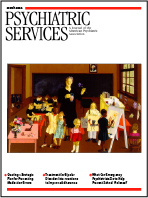Regarding the Pain of Others
In Regarding the Pain of Others, author Susan Sontag raises the compelling moral and intellectual question, What role do images of war and human suffering play in shaping our response to the pain of others? Do we become numbed to the pain as we watch the succession of images that scroll across the screen as we watch the evening news? Or do the images arouse in us a sense of compassion that leads—or at least has the possibility to lead—to constructive actions? Sontag's deep understanding of the photographer's art and reality serves as the backdrop for her discussion and the debate she invites the reader to join.
Even those of us who are not students of photographic art will find much to consider in this short and thoughtful essay. The role of the witness has significance for any clinician who works with men and women who have survived abuse or profound loss and trauma. And although the survivor rarely has a photographic account of the trauma, he or she often has a verbal or written record of lived pain and suffering. For many survivors of abuse, being able to tell one's story to a compassionate witness is often the beginning of the recovery process.
Sontag questions whether too many images of suffering will inure the viewer to the pain of others. Although this may be a risk for the reader leafing through a magazine and scanning pictures of war atrocities, it seems less likely to be the case when the witness is a clinician listening to the stories of trauma survivors. First, and most important, the clinician-witness has a relationship with the survivor who sits opposite him or her in the interview room. The survivor is not an anonymous other but a real person with a deeply personal story. What is stirred in the clinician is not indifference but, rather, what the Dalai Lama calls compassion, a desire to relieve the suffering of others. So stirring and profound can the effect on the clinician be that some have rightly raised questions about the vicarious traumatization that many clinicians experience just by the act of bearing witness.
Sontag legitimately points out that the purpose of some images is to shock the viewer, to disturb the complacency and obliviousness that characterizes much of the modern response to tragedy. And although some trauma survivors may tell their stories with an eye to the shock value of the tale, most do not. Instead, the survivor tells the story in order to be heard and seen, to relieve some of the intense isolation and madness that surrounds the experience of abuse. The survivor wants to reach out and make contact with a person who might be able to understand and witness the pain. Sometimes the account results in action taken by the witness, but sometimes it merely builds a bridge out of loneliness and despair.
Perhaps the fundamental difference between the images that Sontag describes and the stories of abuse that many clinicians hear and witness is that Sontag's images are not the product of the victim-survivors themselves but are the work of a third eye, a photographer who is telling someone else's story. When clinicians listen to the accounts of pain and suffering that trauma survivors bring into the consulting room, the clinic, or the hospital, they are witnessing the firsthand account of one who has lived through suffering, and that account can do nothing but arouse compassion and, hopefully, a desire to help.
Dr. Harris is chief executive officer for clinical affairs at Community Connections in Washington, D.C., and author of The Twenty-Four Carat Buddha and Other Fables: Stories of Self-Discovery.



